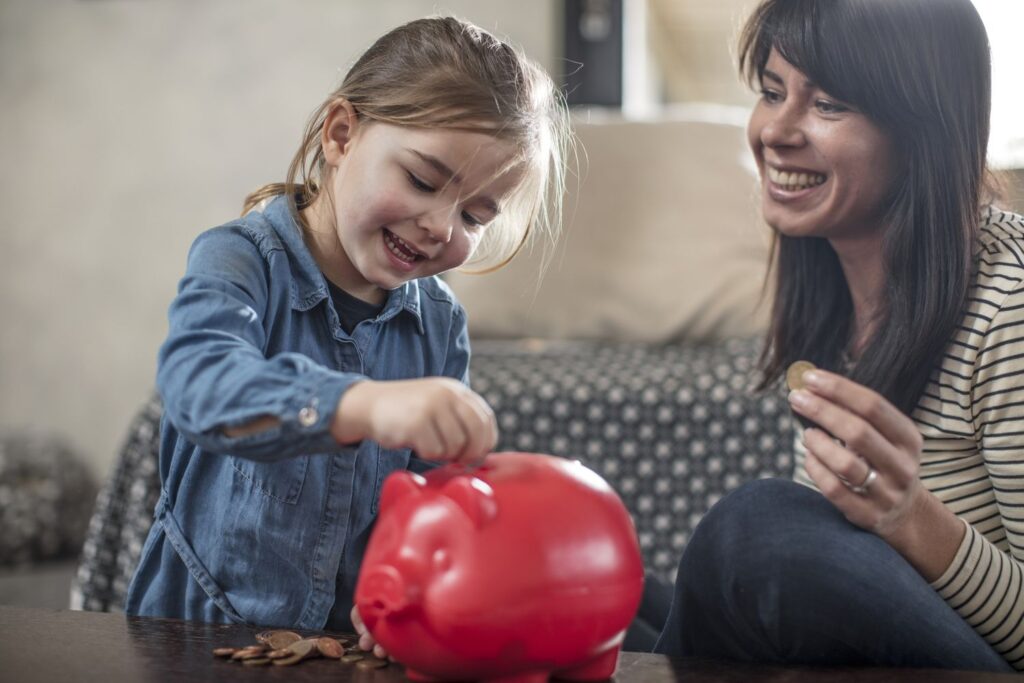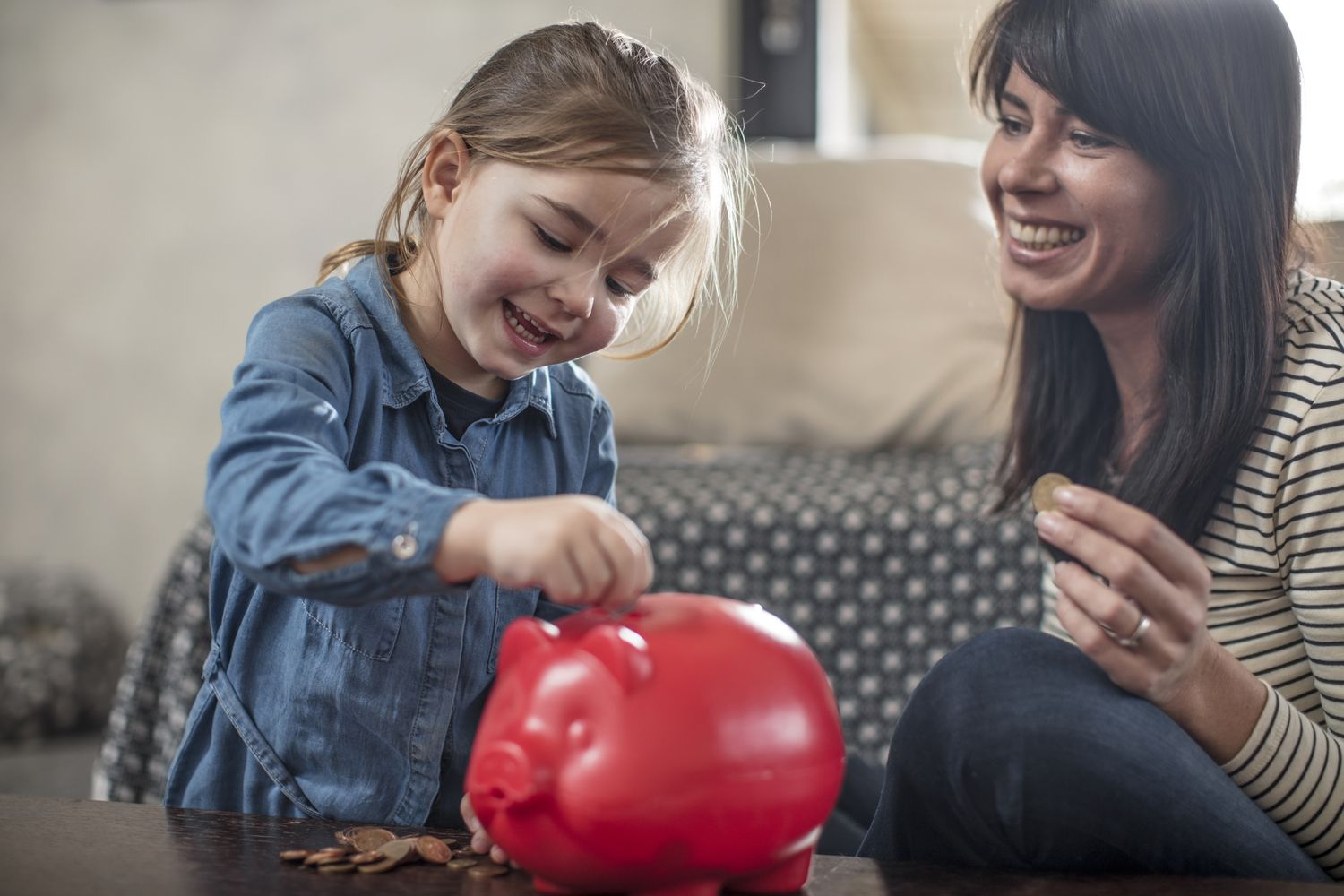
Your children notice your money habits, patterns, and conversations. Here are some lessons they ought to pick up from you.
Even though it may be difficult to believe. Our children’s financial patterns and habits are mostly established by the time they enter primary school. Absolutely, our children have developed many of the cognitive patterns that will affect their ability to manage their finances as adults by the time they are in the second grade or about age 7, while we are still making their lunches for school and watching cartoons with them.
This is supported by a University of Cambridge study titled Habit Formation and Learning in Young Children. Which explains that many fundamental ideas related to later financial behaviors—such as budgeting, postponing gratification, and saving—will typically be in place.
You Can Also Read Our Book By Clicking on this LINK:- https://amzn.to/43HedXx
The same University of Cambridge study goes on to say that a child’s growth and education are greatly influenced by their immediate physical and social surroundings. Noting that “children, being essentially social learners. Acquire cultural practises Assimilate values, attitudes, standards, norms, knowledge, and behaviours that support financial viability and wellbeing easily and gradually.
Translation: Your children watch your financial actions, habits, and attitudes and begin to imitate them at a young age. Economic views, attitudes, and values are also influenced by social context. Which results in a range of financial behaviour and understanding.
Whilst it shouldn’t exactly come as a surprise that as parents. We’re essentially teaching the next generation how to manage their money. It’s nonetheless unsettling to think about how early on your child develops a money perspective, which is then difficult to change.
The good news is that, depending on how you go about it, teaching young children good. Fundamental financial habits can be both simple and enjoyable. What it all means for parents in practise on a daily basis is broken down by money experts. Along with advice on how to develop financially responsible and capable adults.
Send the Appropriate Messages (Money Habits)
Casden advises being thoughtful about the conversations you do have with young kids about money and the decisions you’re making. As well as waiting to have difficult personal finance conversations until the kids aren’t paying attention. This will ensure that you’re conveying the right kinds of messages.
One of the worst mistakes I see parents make, according to Casden. Is telling their children, “We are unable to purchase the tennis shoes you want, thus you cannot have them.” “But, the key message should be that this is not how we choose to spend our money. Savings should come first. We also don’t want to drink too much. We want to instill in our kids the understanding that money is a finite resource.”
Furthermore, expressing that “We don’t make enough money” for something conveys a totally different message than expressing that “That’s not how we choose to spend money” or I don’t think The cost is well worth it.” The first tactic suggests that you have limited financial control. Whereas the second tactic suggests that you can achieve your objectives by making wise financial decisions.
Your choice of words can make it sound like your budget is in control of you instead of the other way around. Which can create a connection between money and stress for your child,” advises Brittney Castro, a certified financial planner at the financial platform Mint. In an interview with Parents.
Discussions Around The Dinner Table Are Important. (Money Habits)
By by listening to the talks of the people in their lives. Children can learn a great lot about personal finance and different money management techniques. At 5, 6, or 7 years old, they may not be able to grasp the finer issues. But they do comprehend the feelings that come with financial discussions and how adults around them are affected by money. The important thing to remember is that they can eventually start to feel and act similarly when it comes to money.
Money coach Carrie Casden, creator of Summit Financial, tells Parents that a lot of teaching about money with young children involves role modelling or conversation at the dinner table. Kids begin to pick up on energy and discourse around the age of 7.”
Does that imply there won’t be any more conflicts about money in front of the kids or discussions that are stressed out over money? Yes, that is what it should mean to some extent.
Adults talk about all kinds of things and assume that children don’t hear or understand them, claims Casden. “Your children hear you. Also, we tend to underestimate their intelligence. If the language is not what people grasp, then it may be the energy.”
Tell The Kids You’re Saving Money
It’s crucial for parents to instill the habit of saving money in their children at a young age if they want to raise financially responsible and successful individuals. This lesson can be approached in a variety of ways, and none of them need be very difficult. (Money Habits)
According to Kelly Lannan, senior vice president of emerging consumers at Fidelity Investments, “making it visible and tangible is the key to educating young kids the value of saving, and how to save money Even children as young as three to six years old can comprehend having a goal and working toward it if they can see it happening visually. (Money Habits)
So that they may learn how to manage their own money. You could start by providing a youngster a small, regular stipend. Instead of just handing them money and leaving, engage them in discussion and find out what they plan to do with it.
Consider letting them save their money in a piggybank to see their savings grow. And then use it to make a little purchase. According to Lannan, these actions assist in establishing in kids values that lay a solid foundation for later-life wise financial practises.
Increase The Visibility Of Money In Daily Life.
Many children no longer see real money being used for purchases because we rely so much on technology in our daily lives, including fintech apps and credit or debit cards. This can be dangerous if they grow up without any significant grasp of money. It might result in a lack of appreciation for the worth of a dollar or even a complete disconnection from the reality that real money is being used to make purchases.
Try utilising everyday financial transactions as instructional moments and actively discussing them while they are happening to help prevent this.
As a certified financial education educator and instructional content lead for Greenlight. The debit card for children, Jennifer Seitz advises, “Get into the practise of speaking aloud about things like the trade-offs you’re making to buy things or the overall cost.” Even though kids can’t actually see the money you’re spending. Explaining how you decide on the best price at the grocery store or save for a fun treat demonstrates to them that there is an important mental process for money decisions.
According to Casden, shopping during a sale is another worthwhile educational experience. “When my daughter was younger, we often went to the clearance rack. I would tell her that a dress that had cost $100 was now only $30. Thus by purchasing this outfit on sale, we will be able to do much more with our money. My daughter has gotten pretty proficient at shopping on her own these days.”
You could even tell young children that if they choose to purchase items when they are on sale. They may get three toys for the price of one.
The goal is to make your financial decisions a regular topic of conversation. Certified financial education instructor Kari Lorz the founder of MoneyfortheMamas.com, explains Parents. Take emotion out of the conversation and concentrate on how you utilise money and the cognitive process involved.
You might think, “Well, chicken is a fantastic price this week we should get some more,” Lorz explains, when doing your grocery shopping. Or you may remark, “We should begin putting money aside immediately for this vacation, as it is expensive.,” when discussing a spring holiday.
Lorz continues that these discussions ought to be lighthearted and unimportant. Make them common topics of conversation, just like you would discuss your dinner plans.
Inspire Young Children To Practice Budgeting
Giving children an allowance can be a great opportunity to teach them budgeting and spending management skills in addition to teaching them about saving. This is much more effective than simply educating your children about budgeting.
The ability to make a budget, according to Castro, “helps kids distinguish between necessities and wants and can help them avoid making unpleasant impulse purchases with their allowance.” “With specific jars or piggy banks for each category. You can assist them in dividing their allowance among needs, wants, savings, and charitable contributions. This teaches them how to start allocating their funds according to what is most important to them at the moment. Teaching children how to make a budget also teaches them other crucial life lessons. Such as how to budget for limited resources.”
Because children pick up so much about life from watching their parents, it’s important to instill good money habits in them at an early age and to normalise financial conversations while also breaking the lessons down into manageable, real-world moments. But more significantly, if you don’t put out the effort, they’re probably not going to find much helpful advice elsewhere.
For more of our content CLICK HERE.

